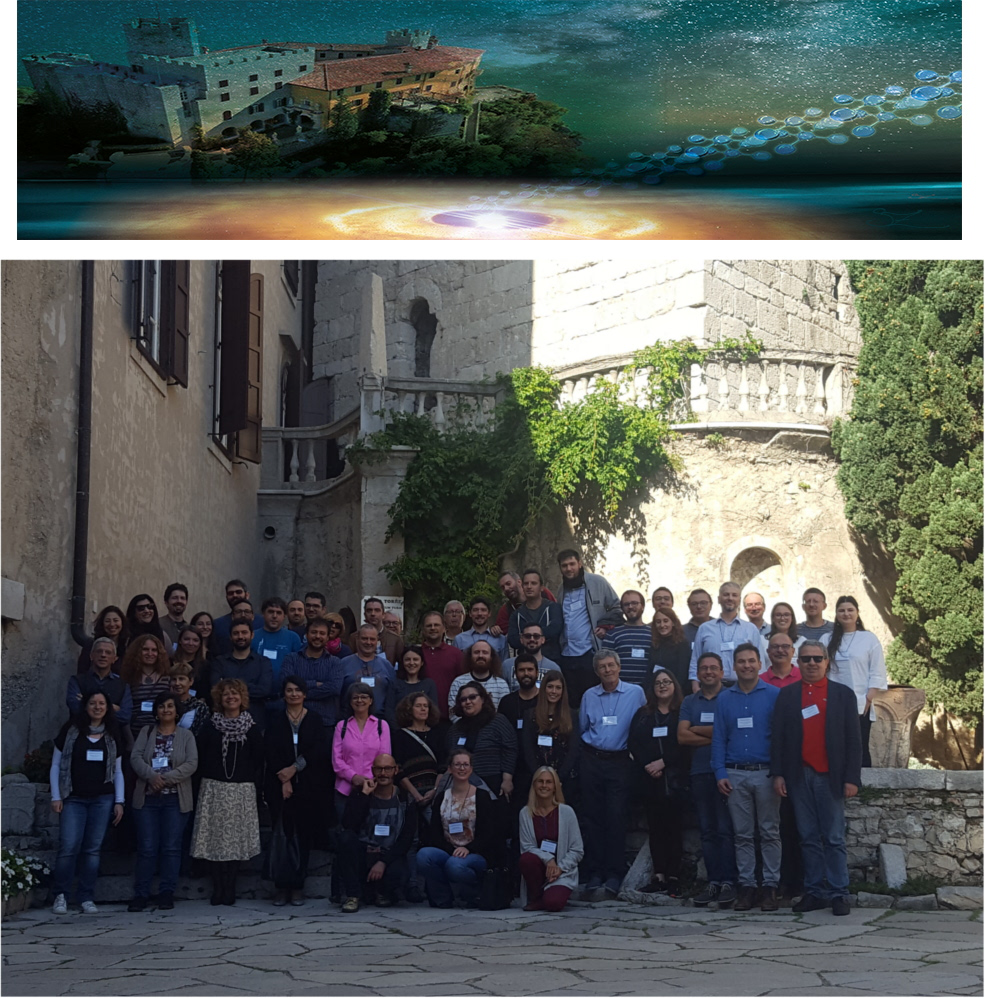Speaker
Description
Light nitrogen hydrides as imidogen (NH), amidogen (NH$_2$) and ammonia (NH$_3$) are located at the very beginning of the reaction network which leads to the formation of complex species, and are thus of primary importance to constrain the models describing nitrogen chemistry in the ISM. They are formed by a chain of hydrogen abstraction reactions starting from:
N$^+$ + H$_2$ $\longrightarrow$ NH$^+$ + H , $\ldots$
which also produces the ions NH$_2^+$ NH$_3^+$ and NH$_4^+$, and then the corresponding neutral hydrides by dissociative recombination. If H$_2$ is replaced with its singly deuterated form HD, this ion–neutral process has a much reduced endothermicity and can thus drive deuterium into the molecular form, enhancing the abundance of ND, NHD, and the NH$_n$D$_{3-n}$ isotopologues.
Amidogen (NH$_2$) has been detected in the interstellar medium: towards the massive star forming region SgrB2 [1], and in the low-mass proto-binary system IRAS 16293-2422 [2]. On the other hand, its deuterated variants NHD and ND$_2$ have not been identified in Space to date due to the incomplete knowledge of their rotational spectrum. Recent laboratory studies performed in Bologna [3] and at MPE Garching [4] have provided very accurate rest-frequencies for these isotopologues at sub-millimetre and THz regimes, thus allowing for sound searches for their spectral features in Herschel/HIFI archival data.
Accurately examining the spectral scan observations performed towards IRAS16293-2422 on the framework of the CHESS Herschel key project [5], we tentatively identified for the first time singly- and doubly-deuterated amidogen in an astrophysical source. The $1_{11}-0_{00}$, $J=3/2-1/2$ line of NHD and the $2_{12}-1_{01}$, $J=5/2-3/2$ line of ND$_2$ were detected in absorption towards the protostar sub-millimetre continuum. The hyperfine analysis of NHD and ND$_2$ spectral patterns, together with a reanalysis of the NH$_2$ spectrum, provided a measure of the amidogen deuteration in this proto-stellar environment.
References:
[1] E.F. van Dishoeck, D.J. Jansen, P. Schilke and T.G. Philips, ApJ, 416, L83 (1993)
[2] P. Hily-Blant, S. Maret, A. Bacmann, et al., A&A, 521, L52 (2010)
[3] M. Melosso, C. Degli Esposti, L. Dore, ApJS, 233, 15 (2017)
[4] L. Bizzocchi et al., manuscript in preparation
[5] C. Ceccarelli, A. Bacmann, A. Boogert, et al., A&A, 521, L22 (2010)

